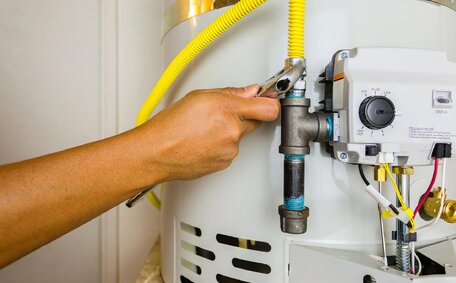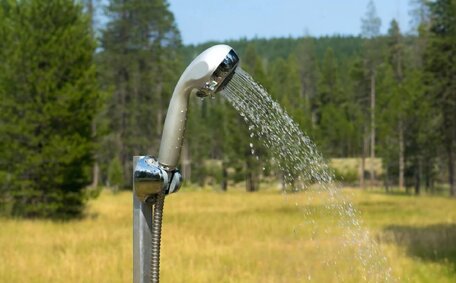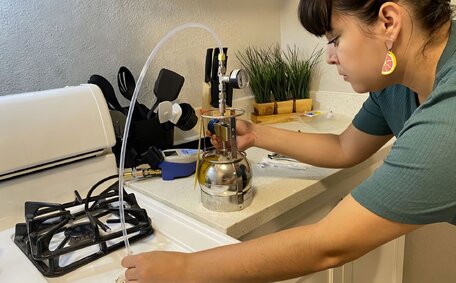Introduction to Using a Plunger for Drain Blockages
Plungers are a practical and effective tool for removing stubborn drain blockages and can be found at any hardware store. The rubber cup of the plunger forms a tight seal, and by vigorously pumping up and down, you create the suction required to dislodge blockages.
Plungers are commonly used to unblock sink drain basins and toilets, swiftly clearing away minor clogs under sink that can occur, and Hot water can also assist in the process. They are typically the first solution people try for blocked drains, before turning to drain cleaner solutions or calling a plumber.
As leading plumbers located in Blakehurst, Sydney, discover how unblock drain blockages using our team’s expertise and tools like plungers at Blakehurst Plumbing. The following sections will explain how to effectively use plunger techniques to clear your drainage quickly.
Getting the Proper Seal for Maximum Plunger Effectiveness
Securing an airtight seal is essential to effectively addressing a clogged drain, and a cup plunger is most reliable for this task. Before deploying your toilet plunger, make sure your sink has some hot water to submerge the plunger’s cup entirely. Ensure that there’s enough water to rise a few inches up the sides of the cup to create ample vacuum suction, Pouring hot water down can add pressure and assist in unclogging the drain.
Press the plunger over the sink without covering any overflow hole to ensure a tight closure all around. The shape of your drain and the condition of the plunger rim will impact the seal.
Avoid uneven gaps where air can escape. Select a plunger size that best matches the drain shape, without any mismatch.
With the plunger sealed, pump the handle up and down with strong, consistent strokes to maintain pressure and loosen the clog. The suction generated will instruct on how to employ the plunger effectively to loosen and release clogs in your pipe. Alternate between sustained upward and downward thrusts and rapid pumping motions for optimum force.
An airtight seal ensures the full plunging force targets the blockage within the pipes rather than dissipating through leaks around the rim.
Plunging Techniques to Dislodge Different Types of Blockages
When plunging to move blockages and to get rid any obstructions, proper technique is key because a drain can be easily damaged by improper use. Begin by ensuring a tight fit for the plunger against the drain, then introduce boiling water if needed.
For toilets, employing a closet auger with calculated strokes is perfect to manoeuvre into your toilet drain from top to bottom, nudging blockages further after pouring boiling water down. Lift slightly between strokes then reseal and push down to repeat. Alternate steady pumping and vigorous thrusts down for optimal force.
If efforts fail after 10-15 cycles, try what drain cleaners can offer before snaking. Steer clear of combining chemical drain agents or excessive use; If thorough plunging proves ineffective, it’s time to consider alternatives to clear your drains. Seek professional assistance and call a plumber if the above methods are ineffective after a few attempts.
With practice, you’ll need only a few straightforward steps like targeted plunging to effectively unclog drains and get rid of most minor clogs. Persistence paired with proper methodology can fix clogged pathways without the risk to damage your pipes, clearing many blockages effectively.
When the Plunger Fails: Alternate DIY Methods to Try
Should a plunger fail in resolving a clogged toilet after repeated efforts, a few alternative DIY techniques could be employed before enlisting a plumber’s help:
Baking Soda and Vinegar
Begin by pouring 1 cup of baking soda down the sink plughole in the kitchen or bathroom, Followed by 1 cup of white vinegar to naturally break down the clog. The chemical reaction between baking soda and vinegar is effective enough to break up sink clogs. Let the mixture sit for half an hour before flushing with hot water to enhance the effect.
Boiling Water
Pouring boiling water directly into your sink can dissolve stubborn grease effectively. Exercise caution to avoid splashing or burns with this simple method, which might resolve the issue.
Drain Auger/Snake
Drain augers, or drain snakes, are manually operated tools which can include improvised materials like coat hangers, and are adept at navigating drain pipes to efficiently hook and remove clogs.
Wearing rubber gloves is recommended for hand protection and safety while operating the cable during cleaning. Carefully feed the wire or use the handle to maneuver the tool through the pipes, a few feet at a time. Carefully extract and clean off debris before directing it further down pipe interiors.
When facing significant blockages that DIY methods can’t handle on the Gold Coast, it’s a prudent decision to call a professional plumber at Blakehurst Plumbing for an expert assessment and thorough drain services.
Identifying the Causes of Recurring and Severe Blockages
Several common factors contribute to blockages severe enough to resist standard plunging:
Food Waste and Cooking Grease
Food remnants, oils, and grease can gradually build up inside pipe walls, leading to significant blockages that demand attention. As these materials cool and harden over time, they stick to pipe walls and restrict water flow. tree roots can infiltrate pipes seeking nutrients, exacerbating blockages.
Hair and Toiletries
excess hair, wet wipes, and products like shampoos, soaps, and creams that are washed down bathroom drains accumulate into sticky globs inside pipes. Over time, these elements create substantial blockages in your shower drain and other drainage areas.
Tree Roots
Invasive root systems from shrubs or trees planted too close can penetrate pipes seeking moisture. The roots multiply and thicken inside drains, eventually causing complete obstructions.
Pipe Damage
Cracks or misalignments in drain pipes offer spaces for debris to snag—Thus, be sure to read our expert suggestions on addressing these issues to stop gradual water flow blockage. Identifying and repairing such pipe issues prevents recurring problems.
When tough, persistent clogs arise that need clear solutions, the use of caustic soda or sending high-powered water down the drain using professional jetting methods is often unrivalled. Our team also offers CCTV pipe inspection to identify underlying causes. Contact Blakehurst Plumbing on 1300 349 338 to book an appointment with our drain specialists.
Professional Drain Cleaning Methods for Stubborn Clogs
Blakehurst Plumbing employs advanced tools and methods to tackle even the toughest clogs beyond the scope of basic DIY solutions:
High-Pressure Water Jetting
Our powerful jet blasters emit forceful water streams that efficiently dislodge blockages in your sink and pipes. The extreme pressure used by our plumbers shows how effectively hot water can clear out years of accumulated grime, waste, and tree roots from deep within drains.
CCTV Drain Inspections
We utilise a specialised waterproof camera to inspect pipes from the inside and accurately identify blockages. This enables our experts to work out the exact location and cause, whether it’s buildup hair, pipe damage, root invasion or other issues.
Electronic Drain Augers
Our experts employ a power auger with an extensive cable to adeptly navigate through blockages, precisely clearing obstructive debris. Being more powerful than standard hand-crank augers, they reach deeper into pipes to clear blockages.
While DIY drain cleaning provides short-term relief, our professional methods are safer for your pipes and offer long-lasting solutions. We can assess your plumbing system, repair underlying issues, and implement preventative maintenance to stop stubborn clogs coming back.
Don’t worry if you’re struggling with a chronically blocked drain - call (1300 349 338) or email to book our drain cleaning experts today.
Preventative Measures to Avoid Blockages in the First Place
Implementing simple, regular drain care and maintenance is the best way you can get to avoid clogs and keep drains free-flowing. Here are some key steps you can take:
Use Drain Strainers
Install sink strainers and tub drain covers in your kitchen sink and bathroom basins so they protect your drains by intercepting hair and food debris before lodging in pipes. Clean sink strainers regularly to prevent clogging without hassle.
Mind Your Disposal Habits
Avoid pouring fats down your sink and opt for eco-friendly plumbing maintenance. Throw food waste in the trash instead of the garbage disposal. Use a wastebasket for hair when grooming.
Clean Pipes Preventatively
Flush pipes monthly with a mixture of cold water, hot water, baking soda, and vinegar to cleanse your sink and tubs; let the solution sit for 10 minutes before rinsing to ensure it works effectively in the drain. Employ a plunger drain technique gently to unblock drain pathways and keep water moving.
Professional Maintenance
Get your pipes inspected annually by Blakehurst Plumbing using CCTV and professional drain jetting. This preventative care can prevent issues and extend your plumbing system’s lifespan.
Remaining vigilant with drain care will help prevent severe clogs that require major removal efforts. Contact our team if you have any concerns about maintaining clear, flowing drains in your home.






